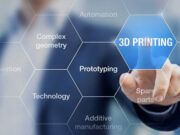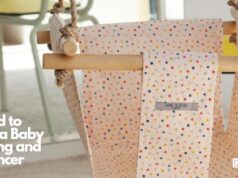
After you missed your period you might go to a doctor for the pregnancy test and if you get confirmed then it is the happiest moment of your life. However, you might be thinking that how the baby grows throughout this pregnancy. You are at a correct place and here you will be knowing about the development of the baby from the germinal stage to the foetus.
Month 1
After 24 hours of fertilization, the egg starts to divides fast into numerous cells. The fertilized egg stays in the fallopian tube for 72 hours. During the third week, the fertilized egg slowly passes 
Month 2
In month 2 the embryo starts developing in the lining of the womb. The outer cells of the embryo are connected directly with the placenta. The inner layer of cells starts forming into more cells. These cells will eventually grow into different organs and systems of the body. In these early days the embryo remains attached to the yolk sac for getting nourishment. Later the placenta is formed and transfer nutrients to the embryo. The nerve cells of baby are growing, the embryo is 2mm long and the heart starts to beat. The ectoderm develops to form a hollow tube-like structure which will develop into spinal cord.
Month 3
In the 3rd month, the baby develops its own blood vessels and circulation of blood begins. On of these blood vessels then connect the baby with the mother and is known as umbilical cord. Then, the arms and legs develop, embryo is curved, having 
Month 4
By the time of month 4 the embryo grows up to 10mm long and brain starts to grow rapidly than the rest of the body. The eyes and ears of the embryo continuously develop. The limb bud cartilage develops and the arm bud also develops. The nervous system continues to develop and starts to take shape.
Month 5
By the time of Month 5 baby is known as a foetus. The legs, arms and other organs start developing. Baby remains inside the amniotic sac and the placenta is continuously developing and chorionic villi help to attach the foetus to the placenta.
Month 6
At the time of month 6, the face of the baby starts to form, eyes become big and prominent, mouth and tongue are formed, hand and feet are in a developing stage. The major organs such as brain, heart, lungs and kidney continue to develop.
Month 7
At this time the face of the baby could be seen with its upper lip and tiny nostrils of the nose. The jawbones develop which contains the milk teeth. By this time heart is fully formed and beats up to 180 times in a minute, that can be seen in an ultrasound scan.
Month 8
There is rapid growth in the development of foetus and placenta. 
Month 9
By this time the foetus is fully formed, all of the organs, bones, muscles and sex are completely developed. The baby starts moving inside the womb of the mother and the skeleton of the baby starts to transform into bones from cartilage. In the last weeks, the baby’s head moves down towards the pelvis. The average weight is about 3-4 kgs and the baby is ready to born.
Article Written by: Navya Sharma has been associated with the health industry for a long time. In her leisure, she loves writing articles. Through her articles, you can obtain knowledge on various stem cell preservation, Stem cell banking, cord blood banking.



























